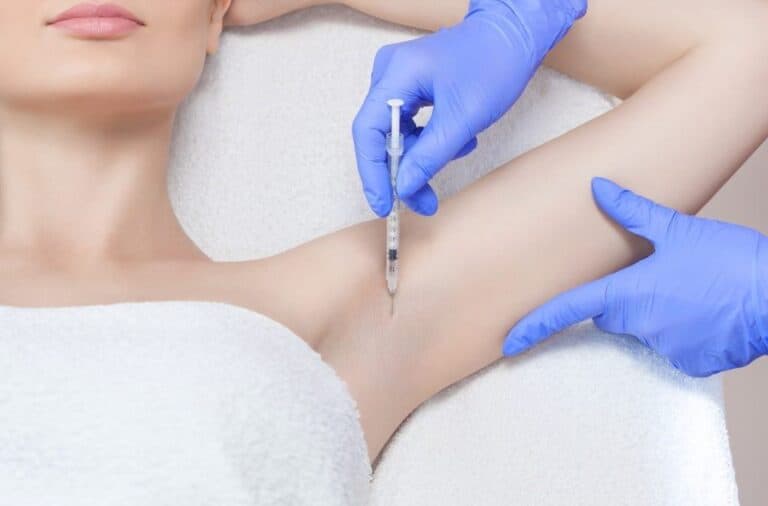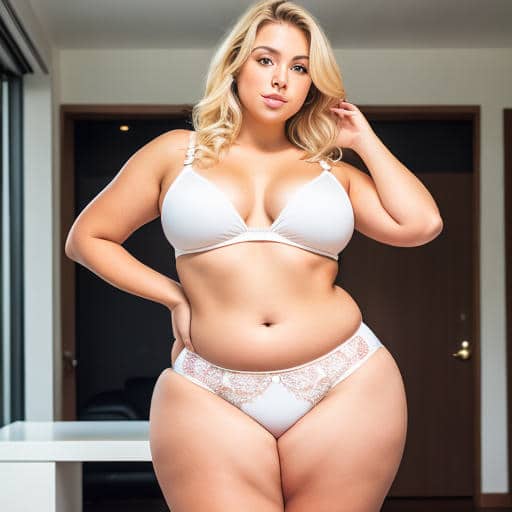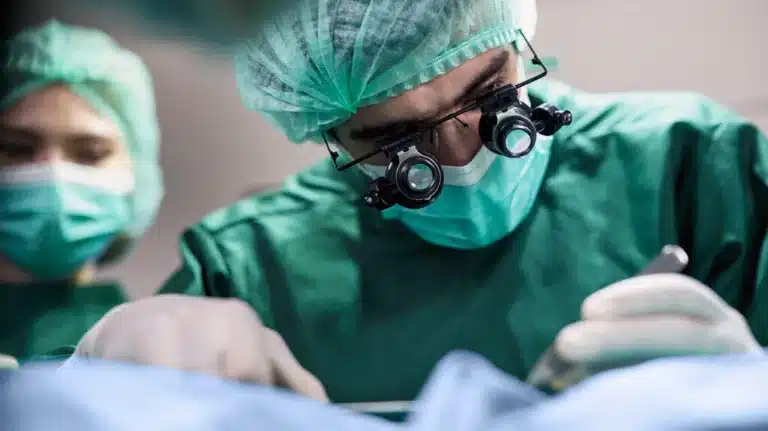Liposuction and Fat Transfer: Achieve a Balanced Aesthetic with Benefits and Risks
Key Takeaways
- Together, liposuction and fat transfer help you achieve a balanced, proportional, and youthful body aesthetic. By taking away unwanted fat while using that fat to add volume and natural contour to other areas, these procedures work together in beautiful harmony.
- Liposuction, for example, needs small incisions to remove stubborn fat. Surgeons usually target areas such as the abdomen, thighs, and hips to create a balanced look.
- The fat transfer process helps to purify harvested fat for use in natural enhancements. This technique allows for a more natural, softer option versus synthetic implants.
- By utilizing these methods in concert, you’ll accomplish better body contours and more symmetry. This further amplifies your curves and contours along your body lines for a more balanced appearance.
- Patients have consistently reported greater satisfaction with this combination. They love their self-esteem and body image knowing they don’t have implants because the results are so natural looking.
- To be ideal candidates, patients need to have enough fat on their body to harvest and should be in good overall health. A stable weight and realistic expectations of the procedure’s results are key to successful results.
Getting a healthy, balanced look usually requires a combination of methods. Liposuction creates a smoother shape by removing excess fat from the body’s trouble spots. Then, fat transfer uses that excess fat to restore volume and create a more youthful, balanced appearance.
This approach not only carves the body to the desired aesthetic, but achieves a balanced, natural look. Liposuction is highly successful at getting rid of unwanted, stubborn fat deposits that won’t budge with diet and exercise. Meanwhile, with fat transfer, that fat is used to restore volume to depleted areas, such as the face, hips or breasts.
When you pair the two together, it can create a more balanced appearance that looks much more natural and can be customized to a person’s specific wish. Learning this synergy can provide better, more satisfying, and longer-lasting results to those seeking cosmetic enhancement.
What Are Liposuction and Fat Transfer
Today, liposuction and fat transfer are some of the most popular procedures in all of cosmetic surgery. Combined, they offer a gentle yet highly effective approach to body contouring. Liposuction is a surgical procedure that removes unwanted fat from various areas of the body.
It’s a minimally invasive procedure that consists of small incisions, through which a board-certified surgeon removes fat, most often from the belly, thighs, or love handles. This procedure shapes aesthetic body contours, while simultaneously offering donor fat for transfer. Only the most skilled surgeons can obtain the best results, balancing precision and safety.
Fat transfer is a procedure that improves the appearance of other areas with the use of extracted fat. The procedure starts with fat harvesting, which is followed by a purification process to make sure only the healthiest, most viable fat cells are utilized. This purified fat is injected into desired areas, like the breasts or buttocks, to provide natural-looking enhancement.
Unlike with synthetic implants, there’s less risk of rejection when utilizing the patient’s own fat, and the result is a more natural appearance. The trend of combining these procedures together has increased in recent years, thanks to their cosmetic benefits and efficiency.
This technique doesn’t just remove unwanted fat, it uses it for perfect contouring. Most patients experience a faster recovery from this combined procedure, returning to their routines more quickly.
How They Work Together
The real magic of liposuction and fat transfer is that they go hand-in-hand. Liposuction techniques such as tumescent and ultrasound-assisted methods are precision liposuction techniques that efficiently harvest fat from areas of excess. These techniques provide for very low tissue trauma, maximizing the number of fat cells left intact for transfer.
Once harvested, the fat goes through a purification process before getting injected through microinjection techniques. This level of precision lends itself extremely well to sculpting and definition, revealing more natural body contours. For example, you can remove fat from the abdomen and use that fat to restore volume to the breasts or hips. This results in a balanced, graceful profile.
1. Complementary Techniques
Liposuction and fat transfer together create a powerful combination to beautifully and naturally refine body contours. Techniques like power-assisted liposuction help to better and more comfortably harvest fat.
This harvested fat, when injected into areas where more curves are needed, can help create a more desirable hourglass figure and better body proportions. For example, when fat from the thighs is used to augment the buttocks, this creates a smooth transition, providing a natural look and feel.
2. Enhancing Body Contours
Liposuction carves out contours by eliminating the problem fat hiding your great shape. This unique combination dramatically changes body proportions, providing radical improvements.
The natural looking redistribution of fat to areas such as the hips enhances the overall silhouette, with results that continue to improve over the first few years. Patients enjoy a better balance of their body, usually back to their daily routine in no time.
3. Achieving Symmetry
In breast augmentation, fat transfer makes the breast more symmetric, creating a more aesthetically pleasing breast. Precision in fat injection allows for symmetry to be achieved and an improvement in overall body image.
Symmetry is what really brings it all together and gives a super polished appearance that will up your confident cool girl game. This approach, which results in a smartly tailored profile, is both cost-effective and time saving.
Benefits of Combining Procedures
By combining liposuction with fat transfer, patients can enjoy the combined benefits of body contouring and breast enhancement. This can help patients attain a more balanced appearance without the use of implants, improving their overall body shape and proportion.
Patients express very high levels of satisfaction, reporting their enhancements feel and look very natural.

Improved Aesthetic Balance
By combining these procedures, we are able to create a very pleasing balance and shape to the body. By eliminating fat in targeted areas and moving it to other locations, patients achieve beautiful, natural-looking proportions.
Successful testimonials are replete with stories of newfound self-esteem and body confidence. Patients love the streamlined recovery period, meaning less interruption to their busy lives.
Targeted Fat Removal and Reuse
Liposuction is a popular procedure that removes unwanted fat, which can then be utilized in fat transfer procedures to enhance other areas of the body. This comprehensive liposuction procedure minimizes excess fat and maximizes the impact, leading to the transformation patients desire while reshaping their bodies.
Patients can enjoy the benefits of recovering in one stage, which significantly reduces the healing process time and energy needed. Additionally, this advanced technique lowers the risk of allergic reactions, as the body recognizes its own fat tissue, making it an effective cosmetic surgery plan.
Long-lasting Results
Fat transfer procedures provide longer-lasting results compared to traditional implants. Because of the fat’s natural integration, the results are lasting, and there is very little scarring from the liposuction.
Patients are able to return to their normal routines within days, but final results are not apparent for several months. Since combining procedures saves on anesthesia costs, it’s a cost-efficient solution, too, with satisfaction rates reaching as high as 90%.
Candidacy Criteria and Considerations
Ideal Candidates
Whether considering liposuction and fat transfer to achieve a more proportionate appearance or other cosmetic enhancements, some traits can indicate a good candidate. Individuals with a high percentage of body fat are the ideal candidates since effective fat transfer requires an abundance of high-quality fat for successful harvesting.
It’s equally important for candidates to be realistic. By knowing as much about the procedure and outcome as possible, you can feel confident in the results you receive. Perhaps unsurprisingly, realistic expectations go a long way toward ensuring happiness.
Importantly, as many as 30-50% of the injected fat cells are not likely to survive permanently, so setting appropriate expectations is critical. Consistency in weight is very important, preferably maintaining a stable weight for six months prior to surgery. This stability allows them to produce positive outcomes.
Health and Lifestyle Factors
Good health is a priority when considering these procedures. A stable weight is important, with consistency over six months preferred. Lifestyle choices, such as diet and exercise, directly affect candidacy.
Surgeons often recommend quitting smoking at least four weeks before the procedure, as it assists recovery and outcomes. Pre-existing health conditions could impact eligibility, so a thorough health evaluation is essential.
Moreover, avoiding strenuous activities for two weeks post-surgery aids in healing.
Consultation and Evaluation
The initial step in the procedure is an appointment with a plastic surgeon. This first consultation is very important.
We have the opportunity to focus on each patient’s medical history and surgical goals during this meeting, allowing us to develop personalized plans. Surgeons create customized surgical plans according to each person’s needs to ensure the most successful outcome.
Often, surgeons recommend a wait of months before further work.
Expected Outcomes and Recovery
Post-procedure Expectations
Immediately postoperatively, patients will see swelling and bruising, which are common after liposuction and fat transfer. You may experience some discomfort, but it’s easily controlled with medication.
When a patient follows their post-operative instructions, they heal faster and their surgical journey is more pleasant. As the swelling goes down, you’ll see early signs of improvement, eventually leading to your final results.
Setting the right expectations is the most important part. It may take a few weeks for impacts to be seen so please be patient.
Recovery Timeline
A general recovery process timeline includes these stages. Typical healing occurs within one to two weeks enabling most to return to their normal routines.
The full recovery takes weeks — sometimes even months, depending on the surgeries that were needed. Studies indicate that combining procedures like liposuction and fat transfer can speed up the return to normal activities compared to separate procedures.
Health, complexity, and other factors can all play a role in how long recovery will take. Regular follow-up appointments are essential for monitoring progress and ensuring the best possible outcome.
Maintaining Results
Even after achieving results, staying on track takes commitment to a healthy diet and physical activity. Fluctuating body weight can affect the permanence of fat transfer results.
Without ongoing self-care, those aesthetic improvements would fade away. Steering clear of heavy lifting or strenuous exercise for four to six weeks allows proper healing to occur.
During the course of several weeks, the transferred fat settles, with as much as 80 percent surviving the transfer.
Potential Risks and Precautions
Liposuction and fat transfer can provide a more balanced aesthetic, but you should be informed of the possible risks. Infections are a significant risk, but studies indicate they affect < 1% of cases. Another risk, fat necrosis, is mostly a short-lived complication that often requires no treatment.
Seromas and hematomas can occur, so watch for persistent symptoms that warrant evaluation. Knowing these potentialities makes sure that you are fully prepared for the procedure.
Common Side Effects
Patients usually have significant swelling and bruising after these procedures. Fortunately, these side effects are temporary. For many people, over time, these symptoms subside, and sometimes even quickly, paving the way for a more seamless step toward recovery.
It’s important to be vigilant for any unexpected or unusual side effects and reach out to a physician with questions or concerns.
Minimizing Complications
Selecting a skilled surgeon is critical to minimizing risk for complications. It’s equally important to adhere to their pre- and post-operative care instructions. They need to make sure, for example, that patients quit smoking at least four weeks before surgery and remain tobacco-free four weeks post-op.
Proper aftercare, including mental health care, is essential to long-term recovery. Don’t forget to wear compression garments and refrain from heavy lifting for four to six weeks!
Importance of Qualified Professionals
Choosing an experienced, board-certified surgeon goes a long way in ensuring the best result from the procedure. Their skill makes the procedure safe and increases the overall success of the surgery.
Smart, careful research and roundtables with the relevant stakeholders should be the first step before any decision is made.
Conclusion
The cooperative powers of liposuction and fat transfer can bring out a more harmonious, natural appearance. This technique sculpts and rejuvenates, providing a more youthful and balanced appearance. You remove stubborn fat and immediately utilize it to provide natural-looking volume, contouring the areas you desire. It’s a win-win, really. Additionally, the downtime is minimal and results are noticeable, allowing you to feel confident in your appearance.
Again, recall that these procedures are not a catch-all. Find an experienced surgeon to help you navigate the procedure. Not only that, they can better customize their advice to your individual needs and goals. Want to learn more about this exciting new path? Contact a reputable expert and discover how these techniques can achieve that natural-looking balance for you. Your journey to a more balanced appearance begins today.
Frequently Asked Questions
What is the difference between liposuction and fat transfer?
Liposuction targets and eliminates excess fat concentrated in specific areas, while the fat transfer procedure, or fat grafting, injects that healthy fat into areas needing volume, such as the face or buttocks. Combined procedures create a harmonious balance to your body’s appearance.
Can liposuction and fat transfer be performed in one session?
Fortunately, both the fat transfer procedure and liposuction procedure can frequently be achieved in one session. By removing and redistributing fat at the same time, this advanced technique increases results, decreases the recovery period, and offers a more balanced appearance.
How long does recovery take for combined liposuction and fat transfer?
There is some variation in recovery after a cosmetic procedure, but most find themselves back to normal activity within 1-2 weeks. Swelling and bruising from the surgical process can take a few weeks to subside. Adhering to your surgeon’s aftercare instructions is crucial for a smooth healing process.
Are there any risks involved in combining these procedures?
Indeed, risks can range from infection, asymmetry, to fat reabsorption during cosmetic procedures. By choosing a highly-skilled, board-certified plastic surgeon, you can greatly reduce these risks and achieve a safer, more effective outcome.
Who is a good candidate for liposuction and fat transfer?
Healthy, non-smoking individuals with a positive outlook and realistic expectations are perfect candidates for this cosmetic procedure. Make sure you have sufficient fat tissue to be harvested. Come prepared to discuss what other areas of your body you’d like to enhance with this fat transfer procedure.
What results can I expect from these procedures?
Look forward to a more sculpted, harmonious look with a comprehensive liposuction procedure. While liposuction eliminates unwanted fat pockets, the fat transfer procedure adds volume and shape to areas of the body that need it.
How should I prepare for liposuction and fat transfer surgery?
Prepare for your cosmetic surgery plan by having an open conversation about your desired results with your plastic surgeon, stopping smoking, and planning for post-op support and care. Following your pre-operative instructions to the letter will help the surgical process and your recovery go smoothly.






